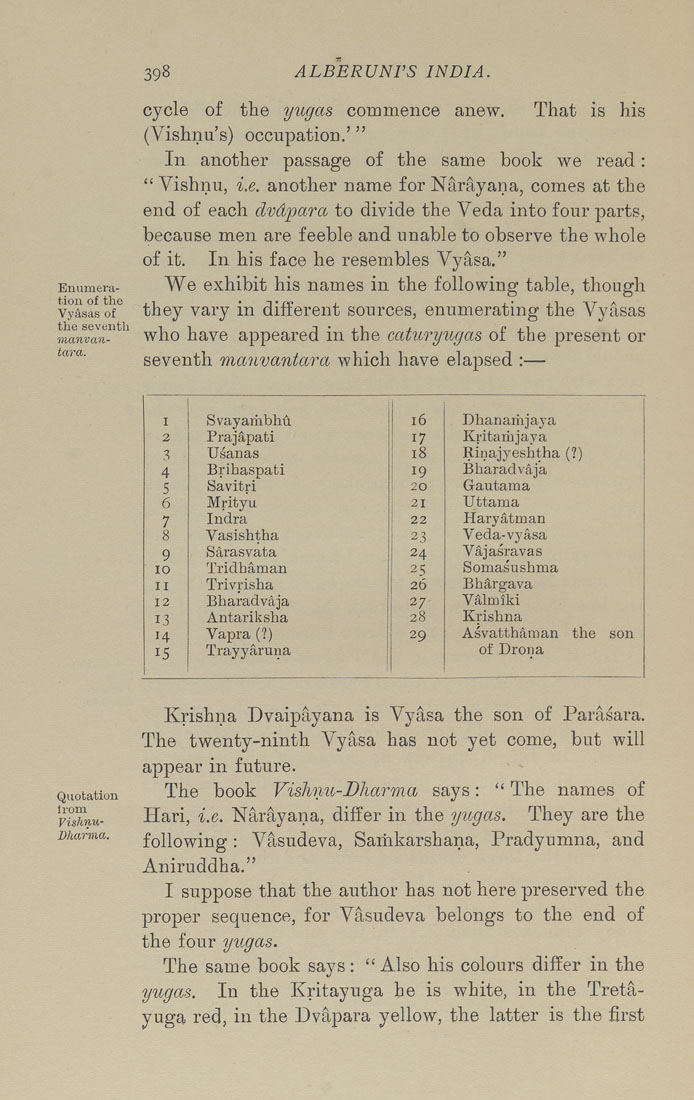Bīrūnī, Muḥammad ibn Aḥmad, Alberuni's India (v. 1)
(London : Kegan Paul, Trench, Trübner & Co., 1910.)
|
||
|
|
|
|
| Page 398 |

ALBERUNPS INDIA. Enumera¬ tion of the Vy^sas of the seventh manvan¬ tara. commence anew. That his cycle of the yugas (Vishnu's) occupation. In another passage of the same book we read: " Vishnu, i.e. another name for Narayana, comes at the end of each dvdparct to divide the Veda into four parts, because men are feeble and unable to observe the whole of it. In his face he resembles Vyasa." We exhibit his names in the following table, though they vary in different sources, enumerating the Vyasas who have appeared in the caturyugas of the present or seventh manvantara which have elapsed :— I Svayambhu i6 Dhanarhjaya 2 Prajapati 17 Kritarfajaya 3 Usanas i8 Rinajyeshtha (?) 4 Brihaspati 19 Bharadvaja S Savitri 20 Gautama 6 Mrityu 21 Uttama 7 Indra 22 Haryatman 8 Vasishtha 23 Veda-vyasa 9 Sdrasvata 24 V§.jasravas lO Tridhaman 25 Somasushma II Trivrisha 26 Bhargava 12 Bharadvaja 27 V&lmiki 13 Antariksha 28 Krishna H Vapra (?) 29 Asvattharnan the son 15 Trayyaruna of Drona Quotation trom yisknu- Dkarma. Krishna Dvaipayana is Vyasa the son of Parasara. The twenty-ninth Vyasa has not yet come, but will appear in future. The book Vishnu-Dharma says: " The names of Hari, i.e. Narayana, differ in the yugas. They are the following: Vasudeva, Sariikarshana, Pradyumna, and Aniruddha." I suppose that the author has not here preserved the proper sequence, for Vasudeva belongs to the end of the four yugas. The same book says: " Also his colours differ in the yugas. In the Kritayuga he is white, in the Treta¬ yuga red, in the Dvapara yellow, the latter is the first |
| Page 398 |







